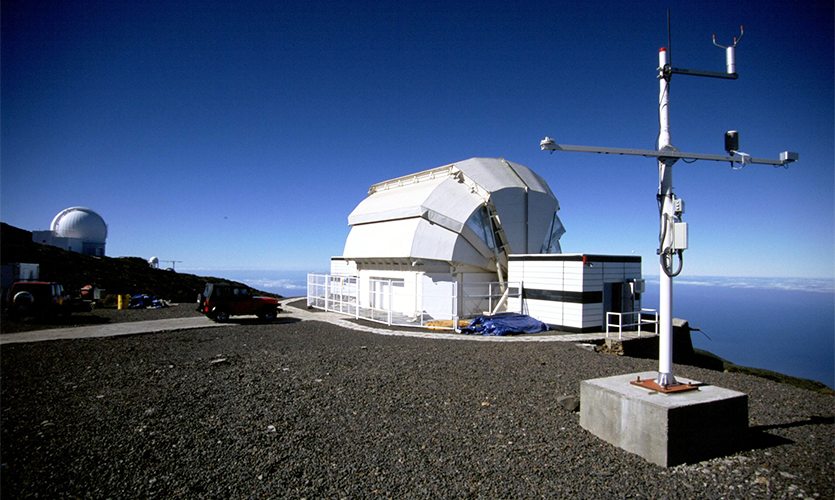New research opportunities with GROWTH for the Astrophysics Research Institute
The Astrophysics Research Institute (ARI) has been named as an official partner in the GROWTH (Global Relay of Observatories Watching Transients Happen) scientific collaboration, setting up exciting research opportunities in a range of areas to tell us more about the Universe, from time domain astrophysics to fast-changing events in the cosmos like supernovae, neutron stars, black hole mergers, and near-earth asteroids.
GROWTH is led by the California Institute of Technology (Caltech) and works through the coordinated efforts of international teams and facilities to continuously gather data of cosmic transient events in the first 24 hours after detection to build a more complete picture and better understand the physical processes of their evolution. This includes discovery engines such as the Laser Interferometer Gravitational-Wave Observatory (LIGO).
The Liverpool Telescope (LT), operated by the ARI will also join the GROWTH global network of observatories providing additional follow-up resources for the search of electromagnetic counterpart to gravitational wave sources.
Students and young researchers can also benefit from being part of the GROWTH Graduate/Postdoc Exchange Program and the Summer Research Program, designed for undergraduates. Last year, Caltech student Kit Chinetti spent her summer at the ARI working with Dr Matt Darnley and Professor Paolo Mazzali on discovery and classification of novae in the Andromeda Galaxy. During the summer project, she discovered a nova in the outskirts of Andromeda galaxy and wrote her first post to the Astronomer’s Telegram (ATel) – an online platform for announcements of discoveries of transient events to the global astronomical community.
Professor Chris Collins, Head of the Astrophysics Research Institute, commented: “The signing of the GROWTH MoU with the Caltech is fantastic news for future research in time-domain astrophysics at the ARI. The new partnership will help provide the electromagnetic identification of gravitational wave sources and determine the properties of the most powerful stellar explosions in astrophysics, in addition to other projects.”
“It is also our priority to work closely with our US colleagues at GROWTH to enhance the student experience of research. Under the new agreement LJMU and Caltech students will spend time at the partner university, where they will benefit from access to new facilities and expertise, and have the opportunity to engage with science research that has fundamental implications for our understanding of gravity and dark energy.”
Professor Mansi Kasliwal, GROWTH principal investigator and an assistant professor at Caltech, said: “We are very excited that LJMU has joined the GROWTH team. Finding the cosmic mines of heavy elements is especially tough as the flash of light may fade away in a few hours. Located in the Canary Islands, Spain, the LT is perfectly positioned to follow-up fading transients initially found in California.”
The ARI is currently in the process of designing the New Robotic Telescope, a facility which will take the Liverpool Telescope’s crown as the world’s largest robotic telescope dedicated to science, and which will be a powerful tool in the search for other-Earths, liquid water and life over the coming decades.
For further information, contact the GROWTH partnership project team, Dr Matt Darnley, Professor Paolo Mazzali, Professor Iain Steele, Dr Chris Copperwheat and Dr Daniel Perley
Nova research as a result of an international undergraduate internship supported by the NSF PIRE GROWTH program appeared in The Astronomer’s Telegram



